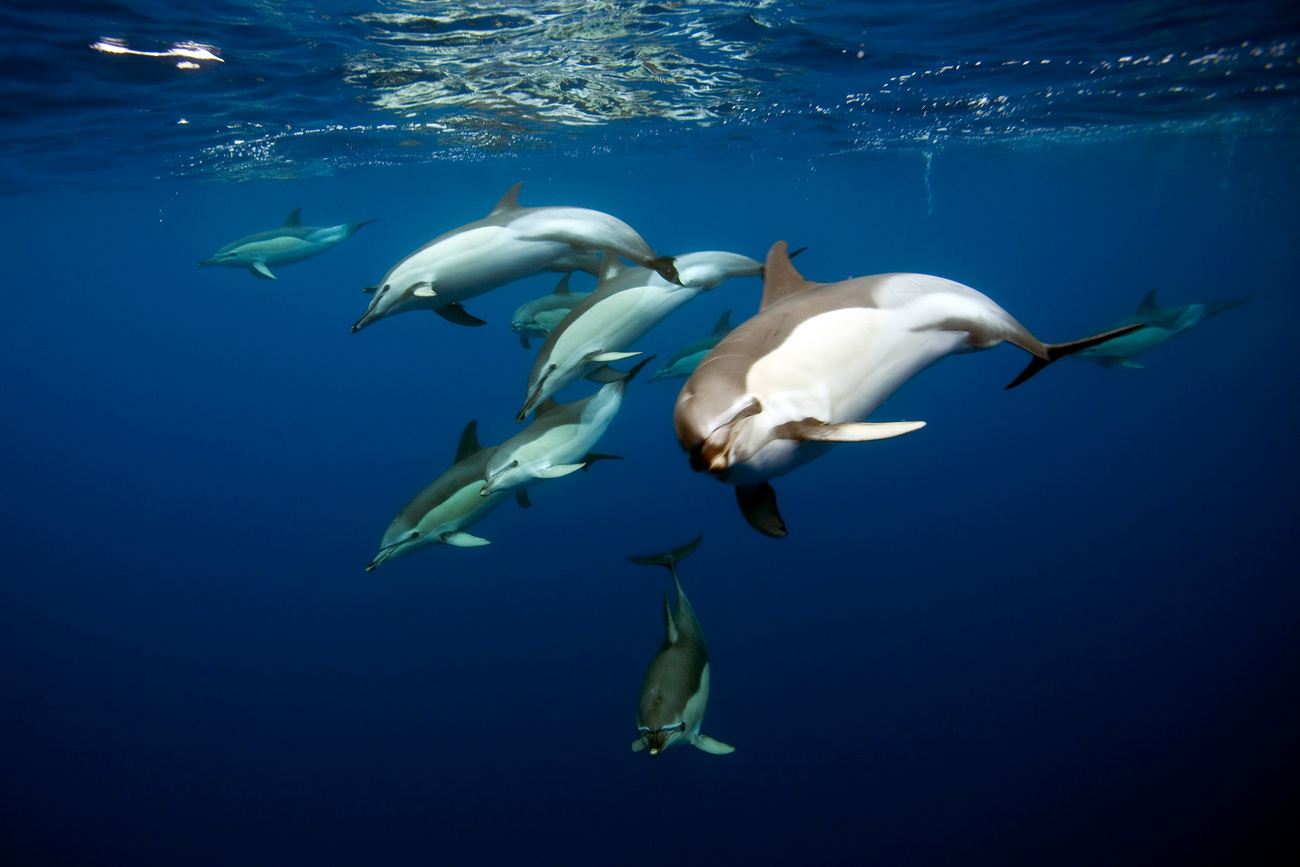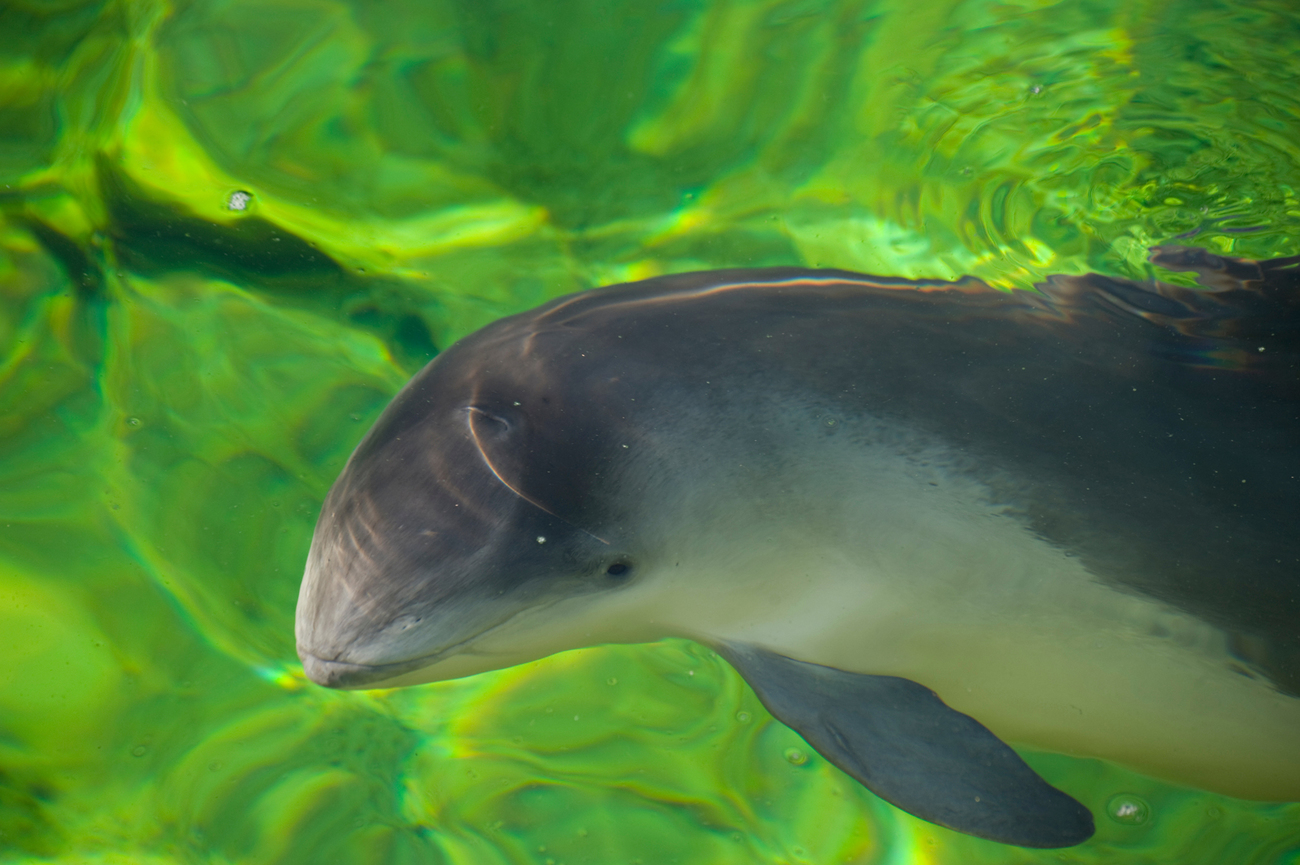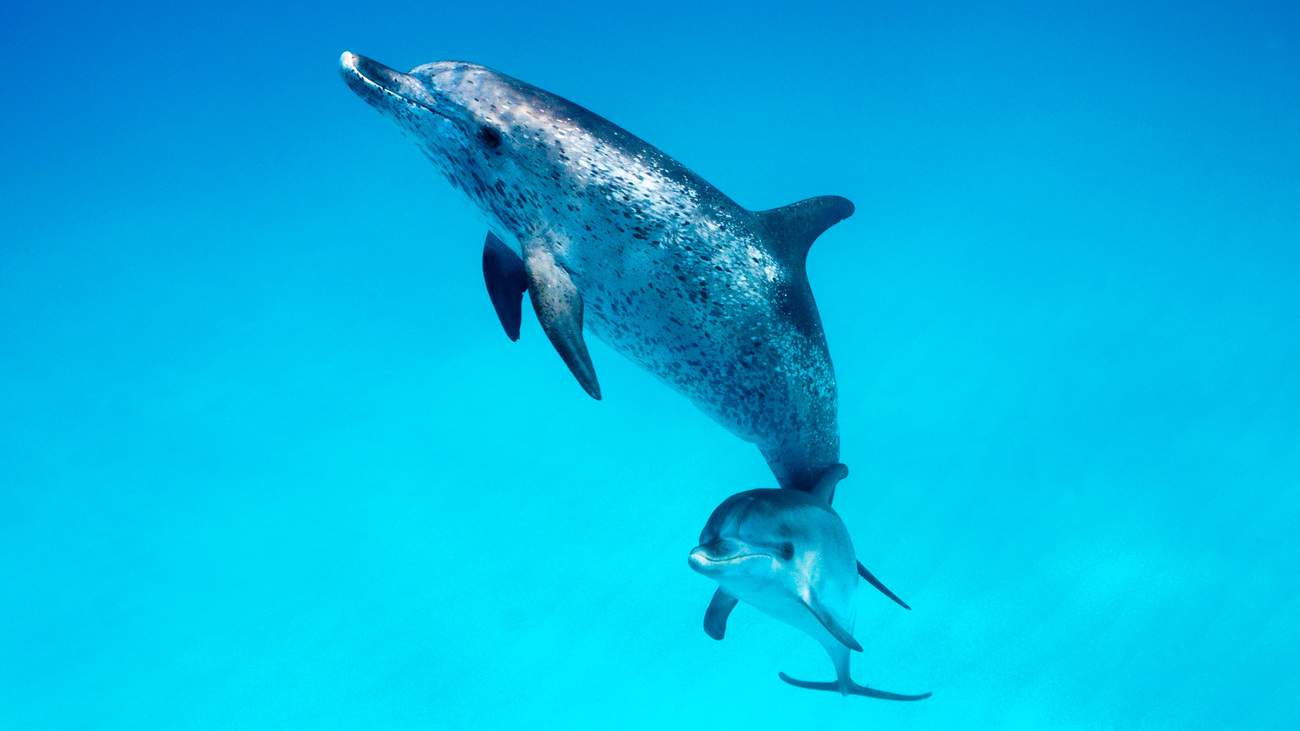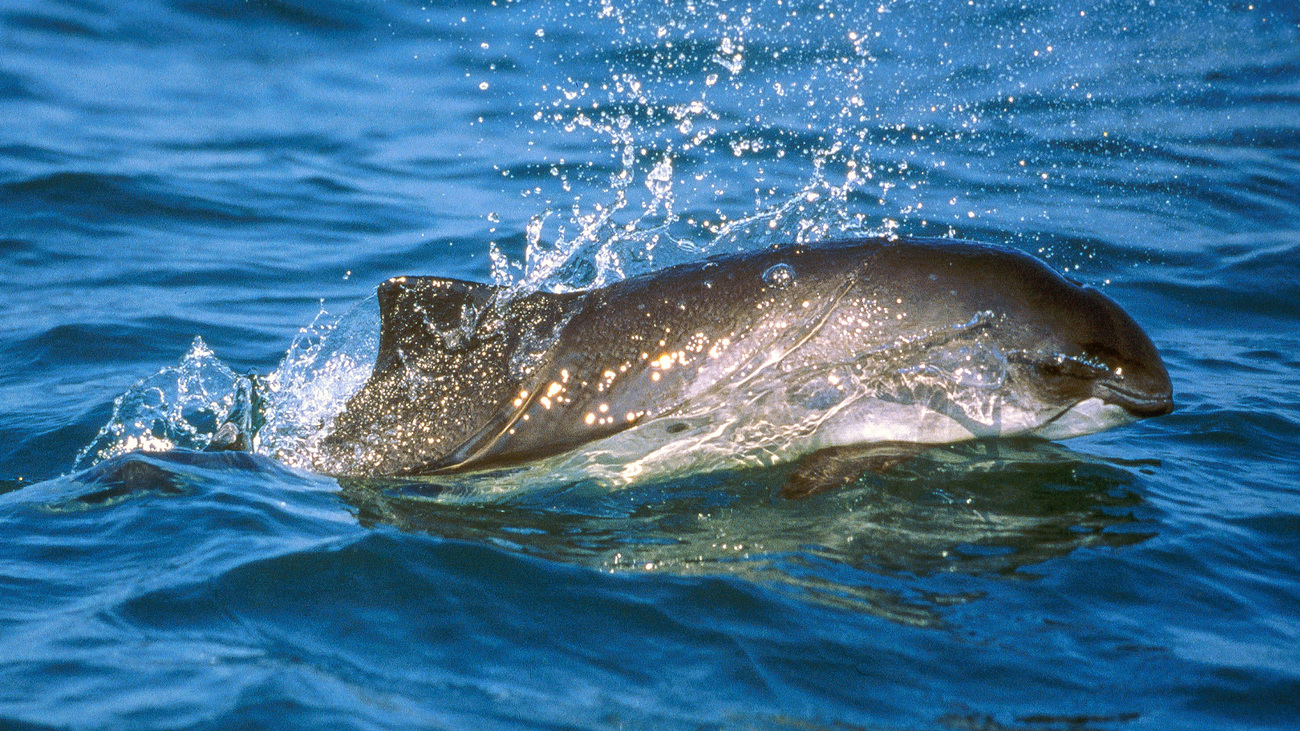Dolphins vs. porpoises: What’s the difference?
Dolphins vs. porpoises: What’s the difference?
Marine mammals like dolphins and porpoises are fascinating, intelligent animals. However, dolphins and porpoises are often confused with each other, and their names are mistakenly interchanged. So, what exactly is the difference between a dolphin and a porpoise, and how are they similar?
Is a dolphin a porpoise?
No. Dolphins are not types of porpoises, and porpoises are not types of dolphins. They are not different names for the same thing. They are separate groups of animals, each including several species.

Porpoises are members of the family Phocoenidae. There are seven species of porpoise. Though similar in size and appearance to dolphins, their closer relatives are narwhals and belugas. The seven porpoise species are:
- Harbour porpoises (Phocoena phocoena)
- Vaquitas (Phocoena sinus)
- Burmeister’s porpoises (Phocoena spinipinnis)
- Spectacled porpoises (Phocoena dioptrica)
- Indo-Pacific finless porpoises (Neophocaena phocaenoides)
- Narrow-ridged finless porpoises (Neophocaena asiaeorientalis)
- Dall’s porpoises (Phocoenoides dalli)
Dolphins belong to the families Delphinidae (oceanic dolphins), Platanistidae (Indian river dolphins), Iniidae (New World river dolphins), Pontoporiidae (brackish dolphins), and Lipotidae (containing only the possibly extinct baiji).
We also often get asked, ‘Are dolphins whales?’ The answer is yes, but it gets a bit complicated. Larger whales like blue whales and humpbacks are classified as baleen whales. Dolphins and porpoises, on the other hand, are classified as toothed whales.
How are dolphins and porpoises similar?

To understand how dolphins and porpoises are related, we need to look at how they evolved. About 50 million years ago, some deer-like animals broke off from their land-dwelling ancestors, entering the water and developing fins. These animals evolved into the Cetacea—the scientific term for the group that contains whales, dolphins, and porpoises. More specifically, dolphins and porpoises are members of the toothed whale suborder, Odontoceti.
Both dolphins and porpoises are sleek, intelligent, fully aquatic mammals that are highly social, living in pods and travelling with other members of their own species. These behaviours are thanks to their large, complex brains. They also both use sonar—or echolocation—to navigate underwater and hunt for prey like fish and squid. Both have a structure in their foreheads called a melon, which assists in their echolocation abilities.
Both dolphins and porpoises generally have a dorsal fin, a blowhole, and countershading camouflage, meaning they’re darker on their backs than on their bellies. Dolphins and porpoises also both have teeth, which they use to eat prey—unlike baleen whales, which feed by filtering smaller organisms through their keratin plates.
Porpoises and dolphins also face similar threats in the ocean. Entanglement in fishing nets poses a huge threat to cetaceans around the world, as many discarded fishing nets are left in the ocean and can cause serious wounds or even drown these animals. Sometimes they are caught as bycatch, meaning they aren’t the target species of fishermen, but become caught in the nets anyway.
Vessel strikes—being hit by boats and ships—also pose a threat to these marine mammals. In addition, ocean noise pollution can interrupt their communication and echolocation abilities. This often is the result of commercial shipping vessels, which is why IFAW advocates for decreased shipping speeds and the rerouting of shipping lanes to avoid marine mammal populations.
Other human-caused threats that impact both dolphins and porpoises include chemical pollution, plastic in the ocean, and climate change.
What are the differences between dolphins and porpoises?

In general, dolphins are much bigger than porpoises. The largest dolphin species is the orca, also known as the killer whale, which weighs a whopping 1,360 to 5,400 kilograms (3,000 to 12,000 pounds) as an adult. For comparison the smallest porpoise species—which is the smallest of all cetaceans—is the vaquita, which weighs up to 54 kilograms (120 pounds) as an adult and measures only 1.3 to 1.5 metres (four to five feet) long.
One of the easiest ways to tell dolphins from porpoises is by looking at their faces and bodies. Dolphins have prominent beaks, while porpoises have more rounded heads. This means they have longer noses and bigger mouths. Additionally, dolphins’ dorsal fins are more curved and hook-shaped, whereas porpoises have dorsal fins that are more triangular. They also have different types of teeth. Dolphins’ teeth are pointed and cone-shaped, while porpoises have teeth shaped like spades. Generally, dolphins are longer and leaner than porpoises.
Porpoises are also thought to be less social and less talkative than dolphins. Dolphins communicate through whistling sounds made through their blowholes, but scientists believe porpoises do not engage in this behaviour. It’s possible that porpoises’ blowholes have structural differences that make it impossible.
Compared to dolphins, porpoises tend to grow more quickly, breed at earlier ages, and live shorter lives. Dolphins are also more likely to approach boats and be curious about humans. Porpoises are shy and avoid boats, with the exception of Dall’s porpoise.
What do dolphins and porpoises eat?
Toothed whales, including dolphins and porpoises, are carnivores that hunt and feed on other sea creatures. Both dolphins and porpoises consume a variety of prey, including schools of fish like herring, sand lance, mackerel, and squid.
The world’s largest dolphin—the orca or killer whale—is a powerful predator. Some consume other marine mammals like seals, some eat only fish, and others prey on sharks and rays.
Vaquitas, the world’s smallest porpoises, mainly eat fish, squid, and crustaceans. They are lower on the food chain and are sometimes preyed on by orcas and sharks.
Are dolphins and porpoises endangered?

Depending on the species, some dolphins and porpoises are endangered.
According to the IUCN, the vaquita is classed as critically endangered, and the narrow-ridged finless porpoise is classed as endangered. The Indo-Pacific finless porpoise is classed as vulnerable, and Burmeister’s porpoise is classed as near threatened. The three remaining porpoise species are all considered least concern.
Two dolphin species are critically endangered—the baiji and the Atlantic humpback dolphin. Seven dolphin species are endangered, including the Ganges River dolphin, Tucuxi river dolphin, Hector’s dolphin, Irrawaddy dolphin, Indian Ocean humpback dolphin, Amazon river dolphin, and Indus River dolphin. Four dolphins are classed as vulnerable, five as near threatened, and 23 as least concern.
What is IFAW doing to help dolphins and porpoises?

IFAW works tirelessly to help all types of wild animals, including dolphins and porpoises. Our Marine Mammal Rescue programme is a world-recognised leader in stranding response. It’s based in Cape Cod, Massachusetts, which sees the most frequent mass strandings of dolphins in the world. We recently opened our first-of-its-kind Dolphin Rescue Center to provide care for dolphins who need extra rehabilitation time.
We also respond to strandings of dolphins around the world. For example, our team recently travelled to Brazil to help respond to a mass stranding of Amazon and Tucuxi river dolphins.
These events are a unique opportunity to not only rescue and provide cutting-edge veterinary care to these individual animals, but also to drive constant innovation and groundbreaking research that is shared with collaborators around the world.
From a focus on the welfare of individual animals to the preservation of entire species, our Marine Conservation programme works to prevent entanglements in fishing gear, reduce collisions with high-speed vessels and ocean noise pollution, and fight against climate change and the harm it causes to marine ecosystems.
Related content
Every problem has a solution, every solution needs support.
The problems we face are urgent, complicated, and resistant to change. Real solutions demand creativity, hard work and involvement from people like you.